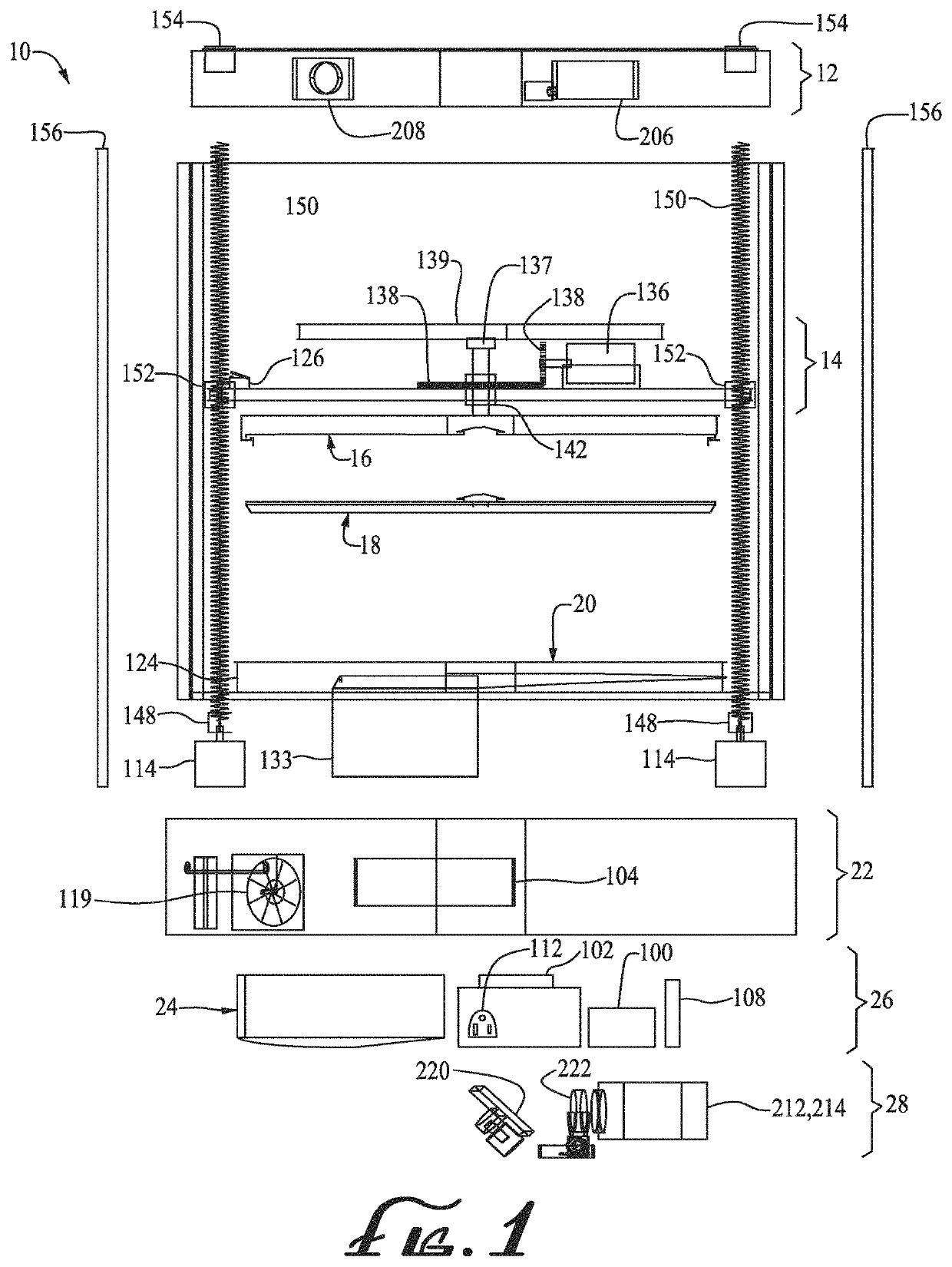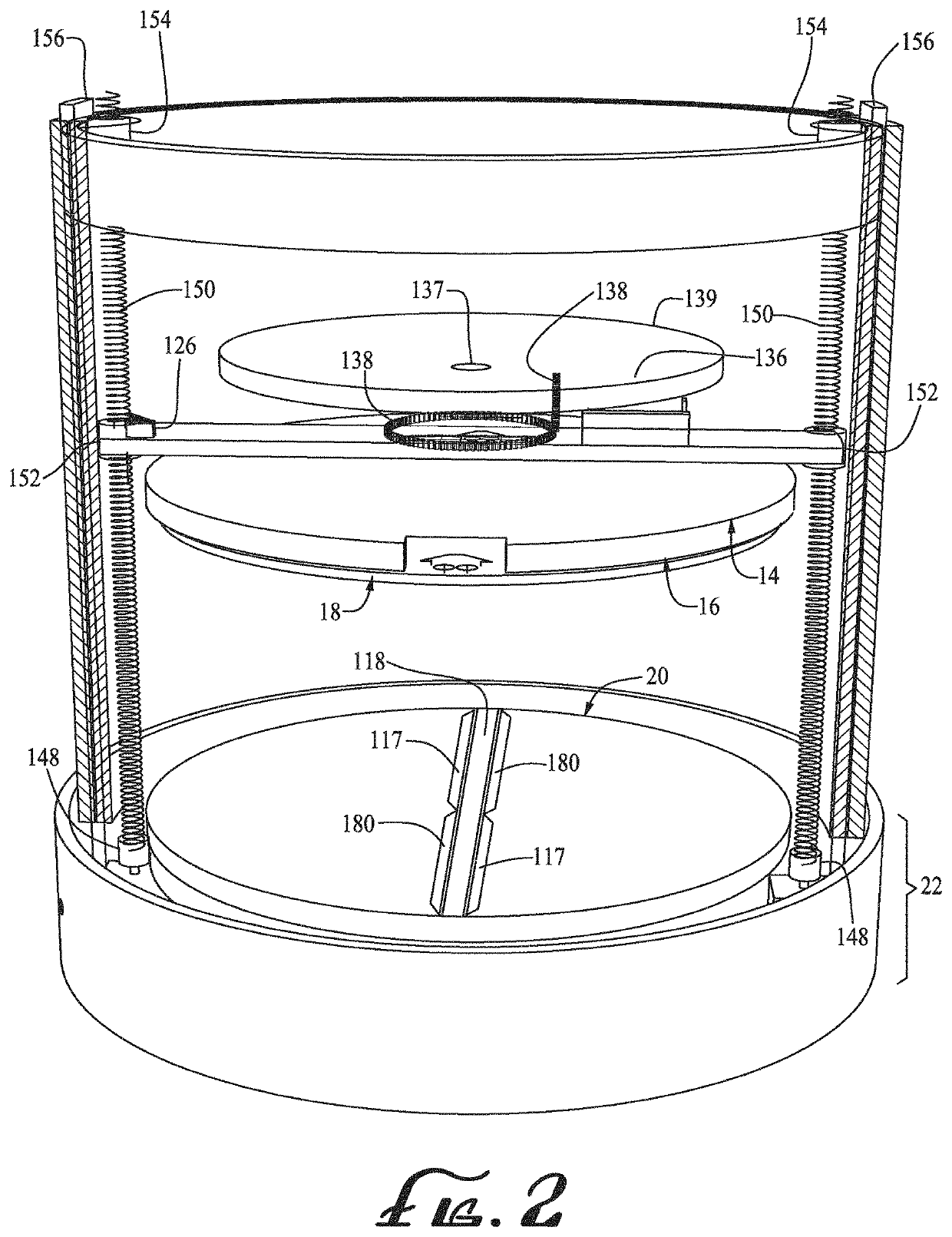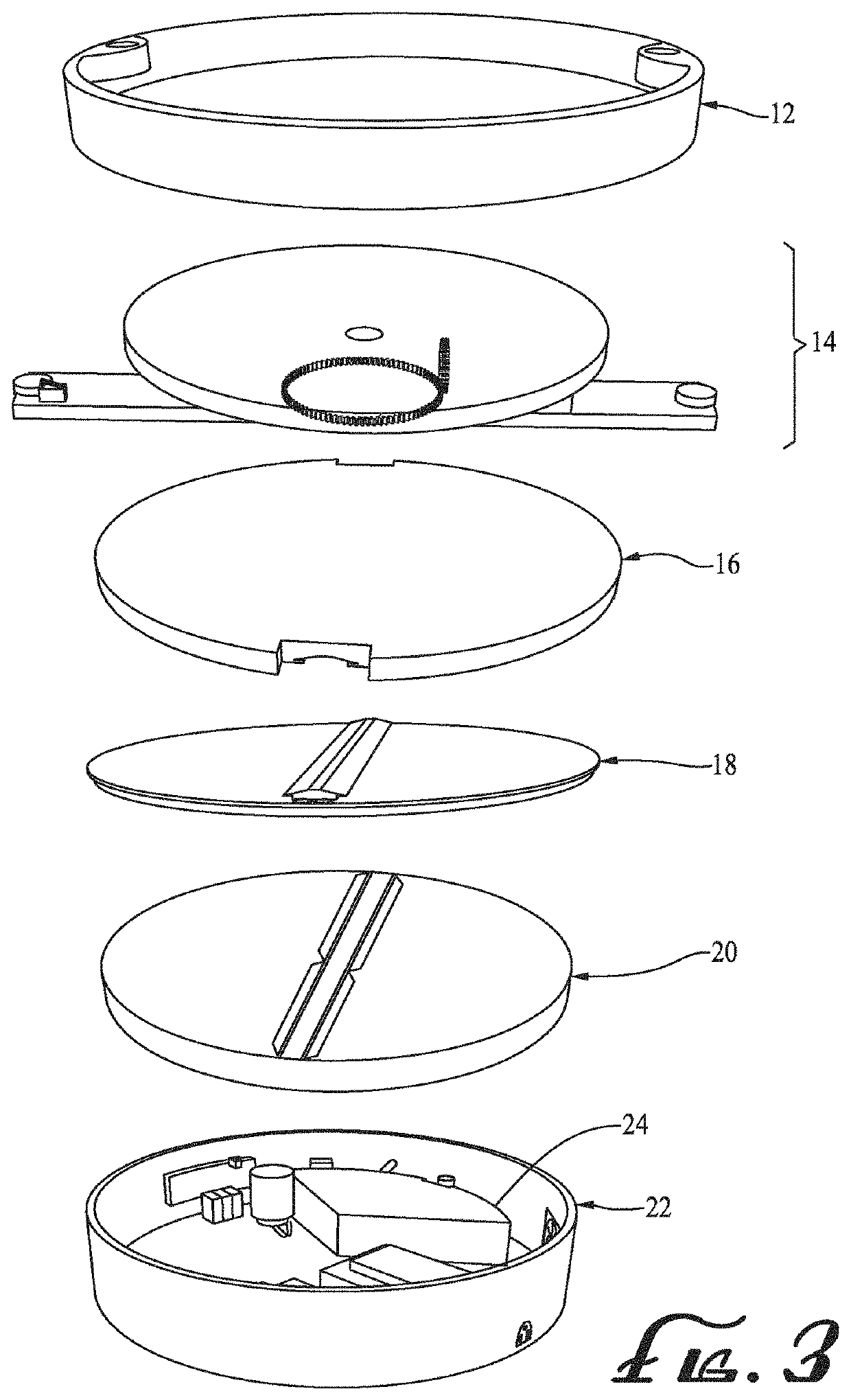3D printing using rotational components and improved light sources
a technology of rotational components and light sources, applied in the field of three-dimensional (3d) object formation methods, procedures and devices, can solve the problems of limiting the functional size of the object, long construction time, and the above process, and achieves high and accurate levels of detail, short time
- Summary
- Abstract
- Description
- Claims
- Application Information
AI Technical Summary
Benefits of technology
Problems solved by technology
Method used
Image
Examples
Embodiment Construction
[0056]The present disclosure sets forth methods and devices for efficient 3D printing that address conventional inefficiencies and deficiencies while utilizing a single compact device. As illustrative of such methods and 3D production devices, the dispensing of a photocurable substance onto transparent substrate, the selective curing and solidified of such materials and the retrieval of the solidified product is described. However, one skilled in the art, based on the teachings herein, will recognize that the apparatus and techniques described herein are not limited to the use of photopolymers along with the irradiation sources suitable to effect solidification, but can be readily adaptable to a broad range of flowable materials that can be rapidly solidified for the continuous formation of solid, three dimensional objects.
[0057]Throughout this disclosure, the preferred embodiments herein and examples illustrated are provided as exemplars, rather than as limitations on the scope of ...
PUM
| Property | Measurement | Unit |
|---|---|---|
| thickness | aaaaa | aaaaa |
| thickness | aaaaa | aaaaa |
| size | aaaaa | aaaaa |
Abstract
Description
Claims
Application Information
 Login to View More
Login to View More - R&D
- Intellectual Property
- Life Sciences
- Materials
- Tech Scout
- Unparalleled Data Quality
- Higher Quality Content
- 60% Fewer Hallucinations
Browse by: Latest US Patents, China's latest patents, Technical Efficacy Thesaurus, Application Domain, Technology Topic, Popular Technical Reports.
© 2025 PatSnap. All rights reserved.Legal|Privacy policy|Modern Slavery Act Transparency Statement|Sitemap|About US| Contact US: help@patsnap.com



